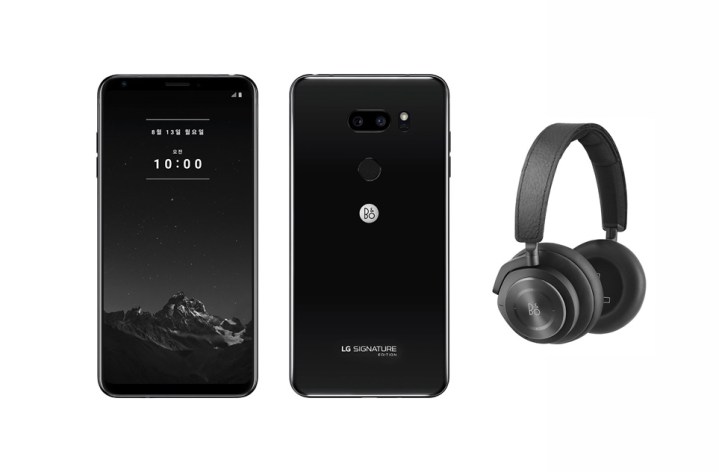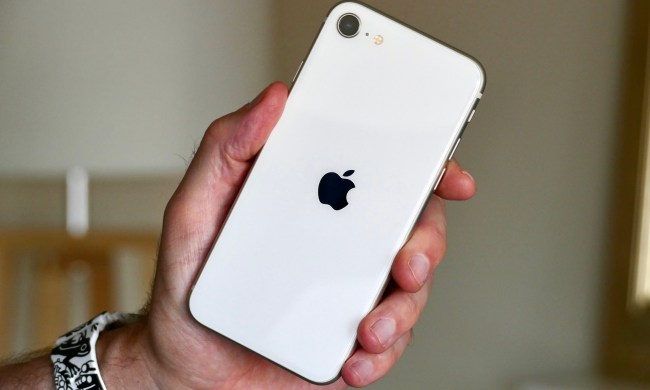
Rising prices are a common complaint with recent phones, and with the iPhone X hitting the $1,000 price tag, it’s easy to see why. But why shy away from such a trend when you can embrace it fully and release a phone made from premium materials and a sky-high price? That’s exactly what LG is doing again with the special LG Signature Edition.
Once preserved just for LG’s TVs and fridges, the premium Signature brand was brought to LG’s mobile division last year with the LG Signature Edition. Now, LG is updating its Signature Edition phone for a new year. Here’s what you need to know about the LG Signature Edition (2018).
Design and display
In terms of looks, the LG Signature Edition (2018) looks almost identical to the last LG Signature Edition — that is, it’s based on the LG V30 and LG V35 ThinQ. That’s not a terrible thing, as the LG V30 is still a good looker, even by 2018’s standards. The V30’s good looks are tempered in a similar way to the last Signature Edition, and instead of a glass body, you will find zirconium ceramic encasing the phone. This premium material is exceptionally hard and tough to scratch — like the Essential Phone — and is usually reserved for high-end watches, rather than phones. Like the last Signature Edition, users can elect to have a name engraved on their phone, too.
The 6-inch OLED display is the same as the LG V30, with an 18:9 aspect ratio and 2,880 x 1,440 resolution for a pixels-per-inch density of 538. That’s crisp and clear, and when coupled with HDR10 tech, makes for an exceptional display. The ceramic body should mean that the phone is able to resist scratches and similar damage, while it’s also fully sealed with an IP68 rating for dust and water-resistance.
Specs and battery
While the outside of the 2018 Signature Edition isn’t much different from the previous year’s model, it is the insides that have seen the largest change from the last device.
Key Specs
- CPU: Qualcomm Snapdragon 845
- Memory: 6GB
- Storage: 256GB
- MicroSD storage: Up to 2TB
- Screen size: 6 inches
- Resolution: 2,880 x 1,440
- Connectivity: GSM/CDMA/LTE
- Battery: 3,300mAh
- Operating system: Android 8.0 Oreo
While the Snapdragon 835 is still a fast processor, it’s nice to see that LG has splashed out on the Snapdragon 845 in the Signature Edition (2018). The Snapdragon 845 is this year’s flagship processor, and it would have been odd for this exceptionally expensive phone to have shipped without it.
The upgraded processor is joined by 6GB of RAM, an enormous 256GB hard drive, and the option to expand storage by up to 2TB of MicroSD card. That’s an awful lot of storage for any one person, and it’s unlikely anyone who splashes out is going to fill their storage any time soon.
Those premium flagship specs are backed up by a 3,300mAh battery. That’s fairly standard, but it should be able to put up a good performance, based on the LG V30’s excellent battery life and the extra power efficiency of the Snapdragon 845. When it does run out, you’ll be able to charge wirelessly, or with LG’s fast charging.
Software and special features
LG has thrown heavily into audio with its last few phones, and while the Signature Edition (2018) won’t be equipped with the LG G7 ThinQ‘s excellent Boombox Speaker, it will have the quad digital to analog converter (DAC) and AptX HD sound that made the LG V30 such an incredible phone for audiophiles.
It’s going to be Android Oreo on the phone, but weirdly, LG hasn’t specified which version it’ll be. We imagine that Android 8.1 Oreo will make an appearance, but at this time that’s not been confirmed by LG to be the case. Expect Android 8.0 Oreo and you won’t be disappointed. LG hasn’t traditionally been heavy-handed with its Android skin, with just a smattering of LG apps pre-installed.
Camera
LG hasn’t varied up its camera tech in some time, and the super-premium price point of the LG Signature Edition (2018) apparently isn’t going to change that. You’ll find a pair of 16-megapixel lenses on the back of the phone — one with an f/1.6 aperture, while the other packs a smaller f/1.9 aperture, but a wide angle 107-degree wide-angle lens. LG’s A.I. camera will also be returning, and this software will attempt to recognize the scene you’re looking at and recommends settings accordingly.
Release date and price
Here’s the big one. We’ve referred to the phone’s cost throughout this, but we’ve held off giving you an actual number until now. The LG Signature Edition (2018) will cost 1,999,800 won — that’s just shy of $1,800. Thankfully, you don’t just get the phone at the asking price — LG will also be giving away a pair of Bang & Olufsen (B&O) Beoplay H9i headphones with the phone. Since they cost 700,000 won (about $620) by themselves, that might help to soften the financial blow somewhat.
Has all this opulence got your mouth watering? Well, you need to be fast, because LG is currently only selling the Signature Edition (2018) in Korea, and there are only 300 units available. Pre-sales for this super-special edition begin on July 30, and the phone releases August 13.


